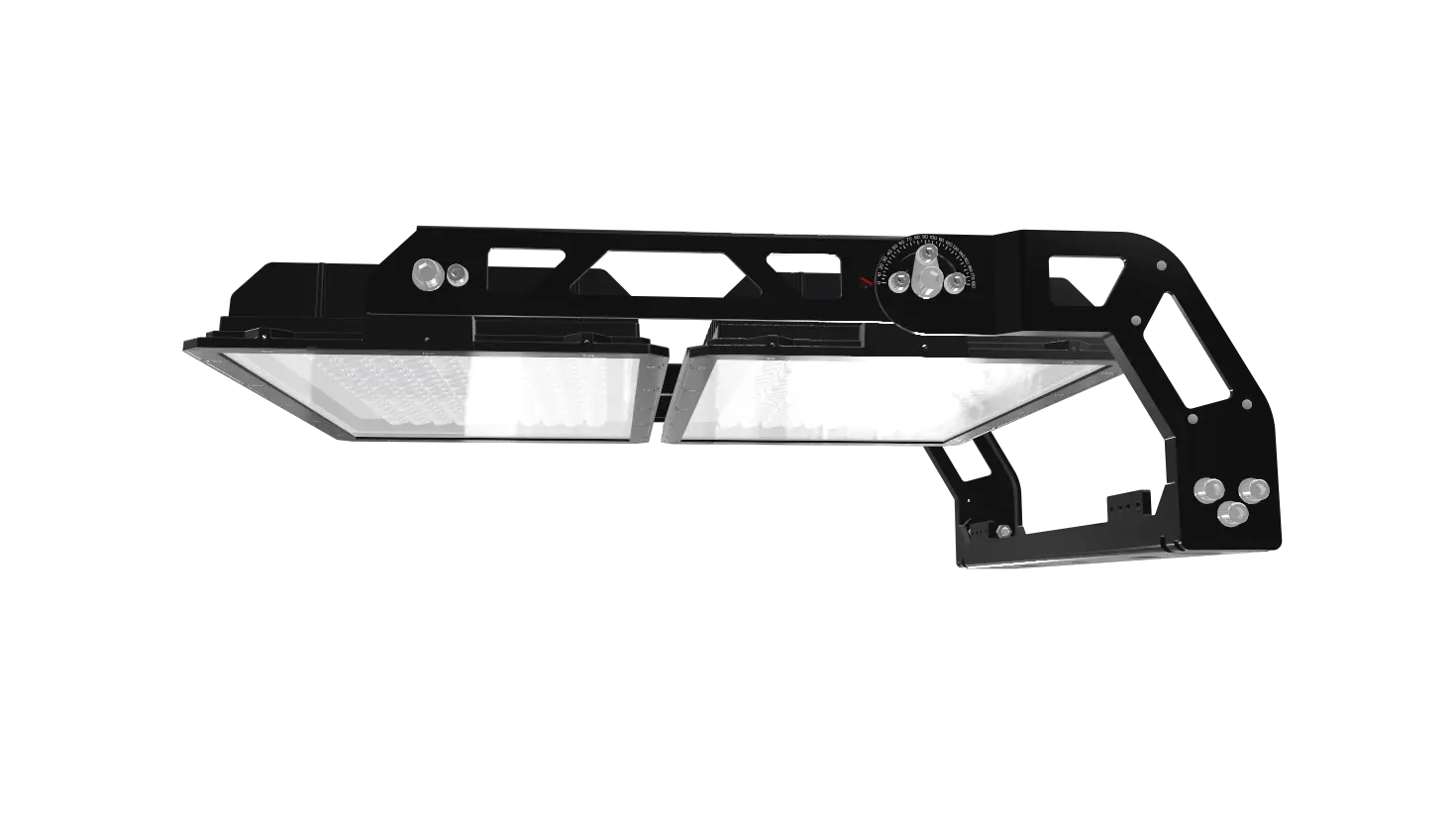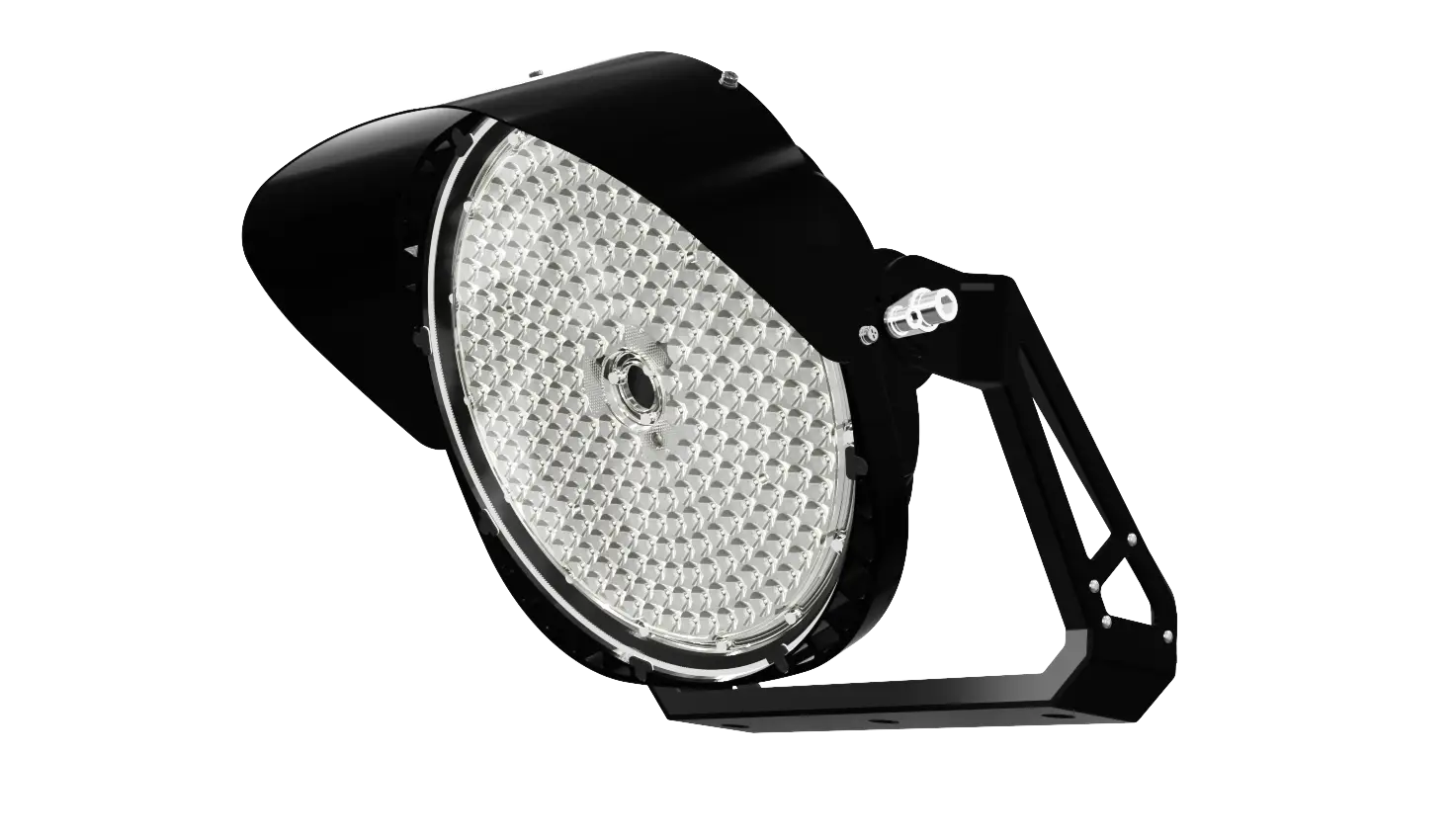LED Stadium Lights Guide: Cost, Benefits, and Standards
Lighting is one of the most critical factors in modern sports facilities. From professional arenas to community fields, the quality of illumination directly shapes both the players' performance and the fans' experience.
Traditional HID fixtures like metal halide and high-pressure sodium have long been the standard, but their limitations in energy efficiency, color accuracy, and maintenance costs are becoming increasingly evident.
That’s where LED stadium lights step in. They deliver brighter, more uniform illumination with reduced glare, all while cutting long-term operational costs. Whether for football, baseball, soccer, or multipurpose venues, LEDs are now the go-to choice for stadium operators worldwide.
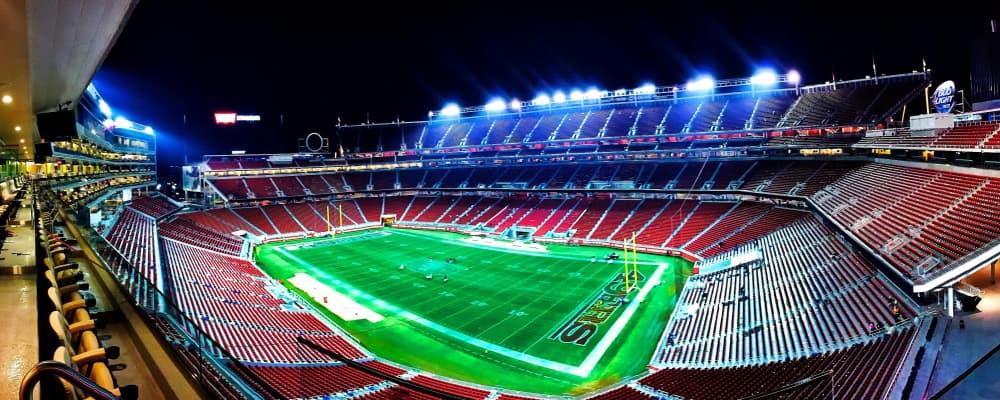
Table of Contents
Key Benefits of Using LED Lights for Stadium
LED Lighting Standards for Stadiums
How LED Stadium Light Helps Save Money?
Applications of LED Stadium Lights
How to Choose the Right Stadium LED Lights?
Why Choose CeramicLite for LED Stadium Lights?
What Are LED Stadium Lights?
LED Stadium Lights (short for Light-Emitting Diode Stadium Lights) are specialized lighting systems designed explicitly for sports venues. Unlike traditional lights that rely on heating filaments or gas discharge to produce light, LED lights use semiconductor chips to convert electrical energy directly into visible light. This fundamental difference in technology gives them unique advantages tailored to the demands of stadiums—where brightness, consistency, and reliability are non-negotiable.
At their core, high-quality stadium LED lights combine three key components:
(1) High-Brightness LED Chips: Usually made of gallium nitride (GaN) materials, these chips emit intense light with high luminous efficacy (typically 130–180 lumens per watt, lm/W), ensuring even the largest stadiums get sufficient illumination.
(2) Advanced Heat Dissipation Systems: Since LEDs generate minimal heat (compared to traditional lamps), but excess heat can shorten lifespan, top-tier LED light for stadium designs include aluminum alloy heat sinks or ceramic heat-dissipating structures to keep chips cool.
(3) Precision Optical Lenses: Customizable lenses (with beam angles ranging from 15° to 120°) direct light exactly where it's needed—whether covering a 100-yard football field or focusing on a basketball court—avoiding wasted light and glare.
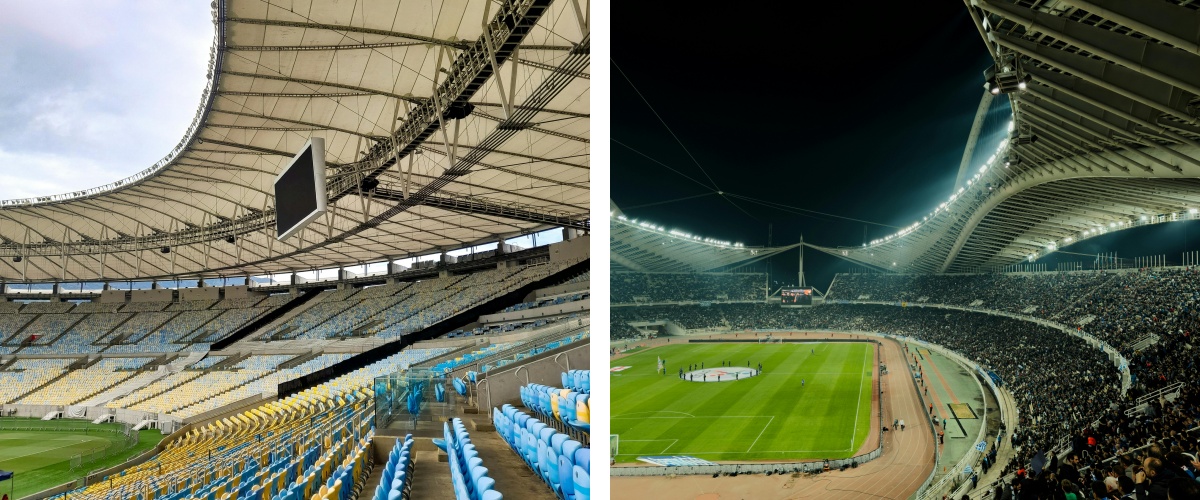
Key Benefits of Using LED Lights for Stadium
Upgrading to LED stadium lights is not only about brighter fields—it's about transforming the entire sports experience while reducing operational costs. Here are the main advantages that make them the preferred choice for modern venues.
1. Energy Efficiency and Cost Reduction
Compared with traditional metal halide or HPS lamps, stadium lights LED consume up to 60–70% less electricity. This translates into massive yearly savings, especially for large stadiums running lights for hundreds of hours per season. The higher luminous efficacy (lumens per watt) ensures that less power is needed to achieve the same—or better—illumination levels.
2. Long Lifespan and Low Maintenance
While conventional lamps may last 3,000–10,000 hours, an LED stadium light can operate for 50,000 hours or more. Fewer replacements mean less downtime, reduced labor costs, and uninterrupted sporting schedules. For stadium operators, this long-term reliability directly improves ROI.
3. Better Broadcast Quality and Anti-Glare Design
Modern sports broadcasting demands flicker-free, high-quality lighting. LED stadium lights deliver stable, instant illumination with no warm-up delay, making slow-motion replays crisp and clear. Additionally, advanced optics minimize glare, enhancing player visibility and improving spectator comfort in both live and televised events.
4. Enhanced Flexibility and Control
Unlike traditional systems, stadium lights LED can integrate with smart control platforms. Operators can dim, program light shows, or switch lighting modes depending on the event—be it a football match, a concert, or a community gathering.
Having seen the advantages, the next step is to understand how LED lighting standards for stadiums define the right brightness, uniformity, and visual comfort for professional play.
LED Lighting Standards for Stadiums
When investing in LED stadium lights, it is crucial to follow international benchmarks to guarantee player safety, spectator comfort, and broadcast quality. Industry authorities like FIFA, FIBA, and CIE have established widely accepted LED lighting standards for stadiums that guide design and installation.
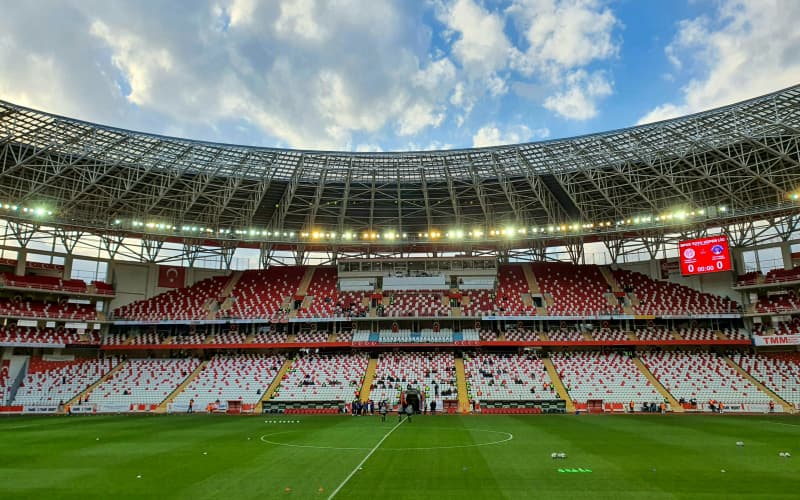
1. Recommended Illuminance Levels
Different sports require different brightness levels:
FIFA football stadiums: 500 lux for training fields, 2000 lux for HDTV broadcasting.
FIBA basketball arenas: minimum 750 lux for community play, 1500–2000 lux for professional matches.
CIE guidelines: recommend an illuminance level at least 3 times higher than the ambient light (E = 3 × environment lux).
These benchmarks ensure players see the ball clearly, referees make accurate calls, and cameras capture sharp images.
2. Uniformity of Light Distribution
It is not enough to achieve high brightness; the light must also be evenly spread. The uniformity ratio (U1 = Emin / Eavg) should reach at least 0.7 for professional arenas. Poor uniformity creates dark patches and glare spots, reducing performance and increasing eye strain.
3. Color Rendering Index (CRI)
High-quality stadium LED lights should have a CRI above 80, ideally 90+, to accurately display team colors and advertising banners. This is vital for both live spectators and TV audiences, ensuring the visual experience matches real-life colors.
4. Glare and UGR Limits
Glare control is a critical safety factor. CIE recommends a Unified Glare Rating (UGR) below 22 for stadium environments. Advanced lens designs in modern LED stadium lights minimize direct glare, giving athletes clearer vision and making matches more comfortable for the crowd.
With standards clarified, the next question most stadium owners ask is—beyond compliance—how do LED stadium lights save money over time? That's what we will explore in the next chapter.
How LED Stadium Light Helps Save Money?
Investing in LED lights stadium systems may seem costly at first, but the long-term savings far outweigh the initial expense. The financial benefits come from both direct and indirect cost reductions.
(1) Lower Energy Consumption
Traditional metal halide and HPS lamps waste energy as heat. In contrast, LED stadium lights convert most power into visible light, cutting electricity bills by up to 70%. For large venues, this translates to tens of thousands of dollars in annual savings.
(2) Reduced Maintenance Costs
With a lifespan exceeding 50,000 hours, LED stadium lights require far fewer replacements than halide lamps. This reduces the expense of new bulbs, labor for installation, and downtime caused by lighting failures.
(3) Avoiding Event Disruptions
Unexpected lamp failures during games can cause delays or rescheduling, leading to lost revenue. LEDs provide instant, reliable illumination with no warm-up time, ensuring uninterrupted schedules and smoother operations.
(4) Maximizing ROI Through Incentives
In many regions, switching to LED lights stadium solutions qualifies for government rebates or energy-efficiency subsidies. These programs accelerate payback time and improve return on investment.
Transition: Beyond cost savings, stadium owners also need to consider practical factors such as installation speed and project timelines. That's the focus of the next chapter.
Applications of LED Stadium Lights
The versatility of LED stadium lights makes them suitable for nearly every type of sports facility and event space. From professional arenas to community venues, their performance ensures both athletes and audiences get the best experience.

(1) Football and Soccer Fields
LED football stadium lights are designed to deliver high lux levels, wide beam angles, and uniform coverage. They meet FIFA standards for international matches, ensuring clear visibility for players and broadcast cameras.
(2) Basketball Arenas and Indoor Gyms
Basketball requires quick movement recognition and accurate color rendering. LED lighting ensures high CRI for better visibility of the ball, court markings, and team jerseys, improving both gameplay and spectator enjoyment.
(3) Athletics Tracks and Multi-Sport Fields
Athletics venues need consistent lighting across large areas. LED floodlights offer precise beam control, minimizing shadows on tracks and field events like javelin, high jump, and discus.
(4) Baseball Fields
Baseball demands vertical and horizontal illumination since the ball is small and fast-moving. LED stadium lights provide bright, uniform coverage for both the infield and outfield, reducing blind spots.
(5) Stands, Exteriors, and Roof Installations
Beyond the playing field, LED stadium lights enhance audience comfort in stands, improve safety in parking areas, and create visual impact with roof-mounted displays or synchronized light shows during ceremonies.
Knowing where to apply lighting is only part of the decision. The next step is choosing the right specifications and models to ensure lasting performance.
How to Choose the Right Stadium LED Lights?
Selecting the right stadium LED lights requires more than just meeting brightness levels. Buyers need to evaluate technical parameters, durability, and suitability for their specific venue.
1. Core Technical Parameters
Luminous efficacy (lm/W): Determines energy efficiency. High-quality LED stadium lights deliver >130 lm/W, providing strong illumination with lower power use.
Illuminance levels: Match sport-specific standards (e.g., 2000 lux for professional football broadcasting).
Color Rendering Index (CRI): Look for CRI ≥ 80, ideally 90+, to ensure accurate colors on jerseys and advertisements.
Ingress Protection (IP rating): Outdoor installations require IP65+ to withstand rain, dust, and wind.
2. Types of Stadium Fixtures
Floodlights: Broad beams ideal for large football or baseball fields.
High-mast lights: Tall-pole systems for even coverage across big arenas.
Area lights: Designed for stands, concourses, and parking zones.
3. Certifications and After-Sales Support
When sourcing stadium LED lights, ensure compliance with UL, CE, or DLC certifications for safety and performance. A reliable supplier also provides warranties, spare parts, and quick technical support to keep venues running smoothly.
Once the right product is selected, the final step is to choose a trusted supplier with proven expertise and successful case studies.
Why Choose CeramicLite for LED Stadium Lights?
When it comes to high-performance LED stadium lights, choosing the right supplier is just as important as selecting the right fixture. Ceramiclite brings together advanced technology, durable engineering, and long-term reliability to deliver solutions that meet the demanding needs of modern sports venues.
1. Advanced Ceramic LED Technology
At the core of every Ceramiclite luminaire is its proprietary FTC (transparent ceramic phosphor) material. Unlike conventional packaging, FTC offers superior thermal stability, excellent lumen maintenance, and resistance to sulfur, ammonia, acids, and alkalis. This means brighter, more reliable lighting even under extreme conditions.
2. Products Designed for Performance
Ceramiclite's sports lighting range includes the SL03 and SL04 stadium lights:
Sports Light SL03: Lightweight, modular, and wind-resistant, with CRI/TLCI 90 and DALI 2.0 smart control. Ideal for football fields, baseball arenas, and community sports facilities.
Sports Light SL04: Engineered for professional arenas with opto-electrical separation, multi-protocol dimming (0–10V, DALI, DMX), advanced glare control, and seamless HID replacement options.
Both models are IP66/IK08 rated, equipped with 20KV surge protection, and tested to last over 100,000 hours (L80B10).
3. Durability and Safety Assured
Ceramiclite products are designed for harsh environments. Features such as C4 anti-corrosion, bird-proof cabling, and dual-layer lens protection ensure consistent performance in outdoor stadiums, coastal regions, and high-humidity areas. International certifications like UL and CE guarantee compliance with global safety standards.
4. Long-Term Value
Beyond technology, Ceramiclite offers extended warranties of up to 10 years, reducing ownership costs for stadium operators. With intelligent lighting controls, venues can optimize energy use and qualify for sustainability incentives, maximizing return on investment.
With a trusted partner like Ceramiclite, stadium operators can confidently move forward, knowing they have both cutting-edge lighting and dependable long-term support. Next, let's wrap up with the key reasons why LED stadium lights are the ultimate choice for modern sports facilities.
Conclusion
LED Stadium Lights are more than just a replacement for traditional lamps—they deliver significant energy savings, long-term cost reduction, superior visual experience, and a practical installation cycle that fits modern stadium needs. By meeting international standards and ensuring player and spectator comfort, they have become the top choice for sports facilities worldwide.
If you are planning a new project or upgrading existing systems, now is the time to switch. Contact us today to get a tailored solution and a free quote for LED Stadium Lights.
FAQs
Q1: How long do LED stadium lights last?
Most LED stadium lights provide 50,000–100,000 hours of lifespan, minimizing replacement costs compared to traditional lamps.
Q2: Are LED football stadium lights suitable for outdoor weather?
Yes. High-quality fixtures come with IP65–IP67 protection, ensuring resistance to rain, dust, and temperature changes.
Q3: Can LED stadium lights reduce glare for players and fans?
Modern stadium lights follow UGR anti-glare standards and adopt precise optics, ensuring comfort and safety.
Q4: How energy-efficient are they compared to traditional lights?
LED stadium lighting consumes 50–70% less energy, with higher lumen output per watt.
Q5: How long does it take to install LED stadium lighting?
Typically a few days to weeks, depending on the stadium size, pole height, and wiring complexity.
Q6: Do LED stadium lights meet international standards?
Yes, top solutions comply with FIFA, FIBA, and CIE lighting standards, covering brightness, uniformity, and color rendering.
Related Product
_thumb.jpg)
